One of the cornerstones of being prepared is to identify items that multitask and to embrace their use during normal times. Doing so not only saves money, but also saves storage space and eliminates having to choose which product or item to use for what.
A good example is the common Mason jar. Another is the flour sack dishtowel.
I was chatting with Backdoor Survival reader, Susan Perry, about this very same thing when she offered to share her top twenty-five uses for flour sack towels. How cool is that?
I grew up around flour sack dishtowels. I remember how my grandmother used them for everything including cleaning rags, aprons, and tidy little bundles holding dry goods. I had forgotten about them until ten years ago when I saw a package at Wal-Mart. There was no looking back and I still use those same towels today. I even embroidered them myself with colorful little cabins.
What the Heck are Flour Sack Dishtowels?
As a homesteader, I’m all about quality when it comes to basic supplies, and as an herbalist who also loves cooking from scratch, that goes double in the kitchen. I discovered years ago that when it comes to kitchen towels, flour sacks are the only way to go.
Although the term might provoke an image of rough, dusty, oversized rags, they are quite the opposite. They’re super absorbent, lint free, and vastly superior to the decorative towels you might find at a department store.
A Short History of Flour Sack Towels
It all started back in the 1850’s. Those old wooden barrels were heavy and bulky. Cotton had become inexpensive, so grain mills began shipping flour in large, thick cotton bags strong enough to hold fifty pounds.
Before long, cotton bags were being used not only for flour, but also for sugar, seeds, animal feed, fertilizer, and more. These goods were sent out to general stores and carried home by horse and wagon. Resourceful housewives soon realized that the bags’ sturdy fabric was way too useful to be tossed out. Rural families typically had limited income, and soon this packaging material was finding new life not only as towels, but also as aprons, diapers, coverlets, and even clothing.
Of course, no one wanted to wear a shirt or dress with the name of a flour company printed across the front for all the world to see. Housewives learned how to remove the labels with several rounds of soaking and washing with lye soap and bleach.
Over time, manufacturers decided they could increase their profits by upgrading the bags. They began using removable paper labels and started printing embroidery patterns onto the fabric. But the real excitement began in the mid-1920s when cotton mills started producing sacks using colorful flower prints, border designs for pillowcases and curtains, and patterns for children’s clothing, dolls, and teddy bears.
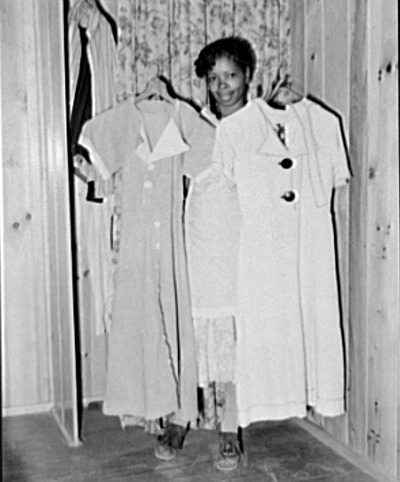
The clever use of cotton sacks only increased during the depression years, and as clothing wore out, every scrap was put to use in beautiful, carefully designed quilts.
I’d been on my farm only a few months when I discovered today’s version of flour sack cloths. A neighbor showed me the Lehman’s Catalogue, and there they were, more than thirty inches long and almost as wide. With every week that went by, I found more ways to use them. That was twenty years ago, and I still find a new use for one every now and then.
Two Kinds of Flour Sack Towels
For homestead use, the best towels measure at least 30 by 30 inches and are thick and durable, made of pristine, high-quality cotton cloth with hemmed edges and a high thread count. With their quality and size, these are the most useful and longest lasting kind, giving good service for many years.
They are perfect for dealing with large batches of herbs and produce. I’ve used them to carry two gallons or more of blueberries from the counter to the sink.
The one thing I don’t use them for is straining herbs, yogurt, or jellies, as the thick fabric usually holds back too much of the liquid. I’ve even had the liquid squirt out the top and onto the counter when I tried to hurry things along by squeezing.
Some may think the smaller, lesser quality towels are not worth having, but I disagree. Their thinner fabric makes them the best choice for straining. They are much less expensive and readily available at discount stores such as Wal-Mart. I keep a kitchen drawer full for daily dish drying and counter wiping, and for small batches of herbs or produce.
There are other sizes and fabric choices, so hopefully the above will help you decide what you need.
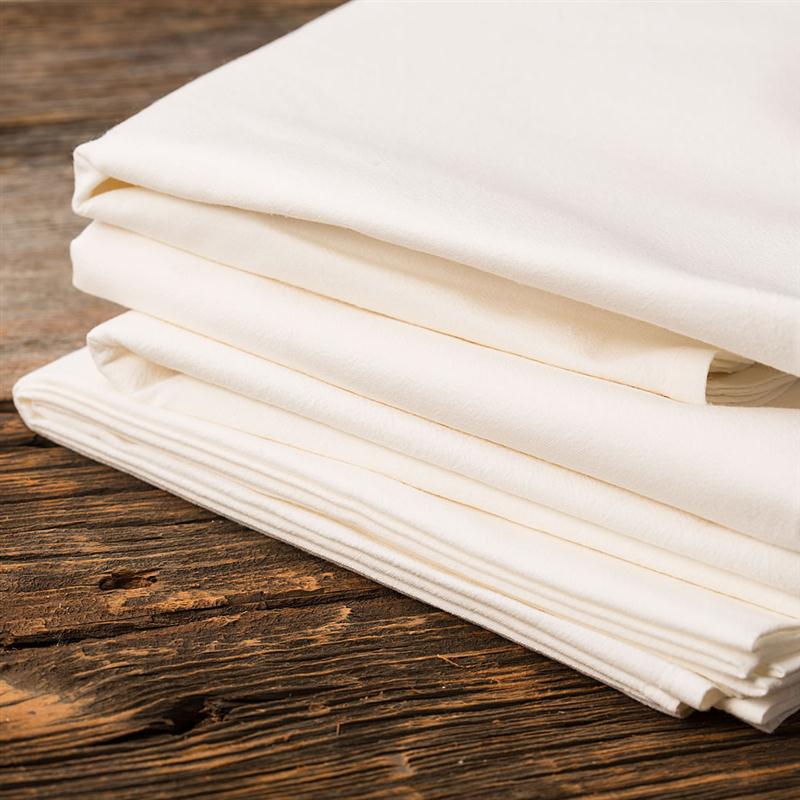 Twenty-Five Ways to Use Flour Sack Towels
Twenty-Five Ways to Use Flour Sack Towels
Ways to use Flour Sack Towels In the Kitchen:
- Cover bread dough and baked goods to keep them warm while rising.
- Wrap and cover dinner rolls and breads to keep them warm at the table and contain crumbs.
- Spread towels out on the counter to drain produce after rinsing.
- Fold a towel in half and sew a seam on the edge of the long side, and on one of the short edges. This makes a bag you can use for storing produce in the refrigerator.
- Line a refrigerator drawer with a slightly damp towel to keep greens, lettuce, and salad items moist and fresh. The produce won’t be harmed as it would be by plastic wrap, which can quickly cause deterioration.
- Sort blueberries on white towels to easily see and remove damaged berries, loose stems and bits of leaf; clean the berries by holding up one end of the cloth and rolling them from one cloth to another. Any remaining debris or tiny insects cling to the cloths. This eliminates the need to rinse the berries, which causes the skin to toughen when frozen.
- Use thinner cloths to strain homemade jellies, yogurt cheese, and anything else that needs straining. For large amounts, line a metal strainer with the cloth.
- Dry dishes, wipe counters and do general kitchen clean-up. Save trees by using fewer paper towels.
- Set canning jars on a towel to drain after washing; spread out a new, dry cloth to keep jars clean, avoid slips, and catch drips when filling jars with soup or other liquids for the freezer, or when filling jars with beans, grains, or other items for storage.
How to use Flour Sack Towels In the Garden and Around the Homestead:
- Line a peach basket with a large towel for picking small or delicate produce such as berries, beans, lettuce, and tomatoes. This keeps berries from falling through the gaps and protects produce from the rough edges.
- Hold the corners to carry a few handfuls of produce from garden to kitchen.
- Use a cloth to line a wicker basket to cushion fresh eggs as you gather and carry them from the hen house.
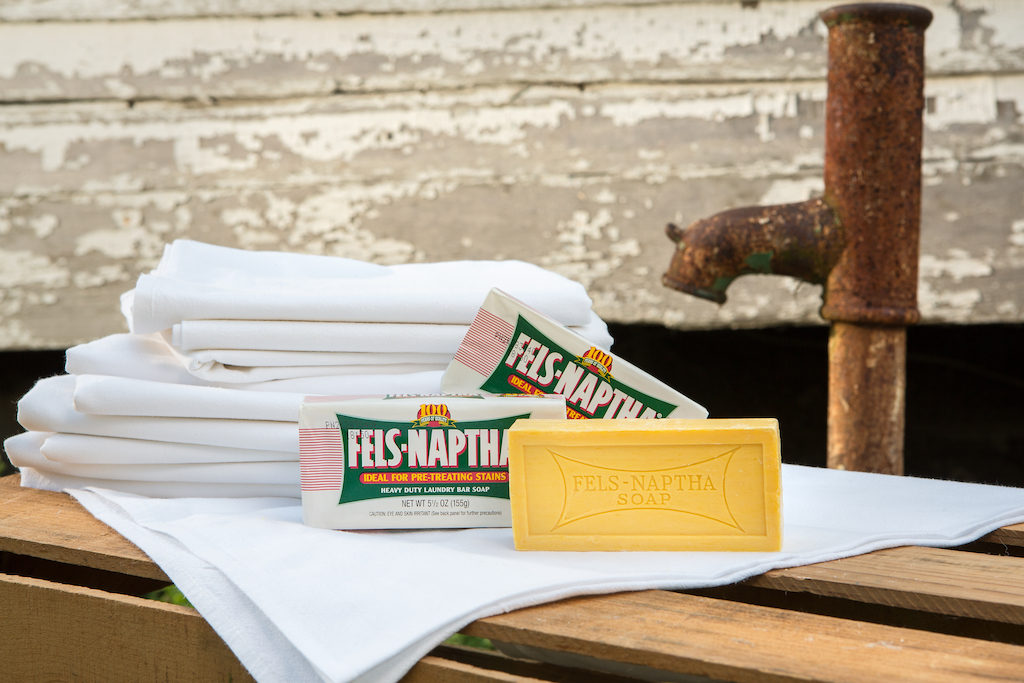
Ways to use Flour Sack Towels In the Home:
- When a cloth is stained and worn, relegate it to the box of cleaning rags. Snip off a small piece of one corner to identify it as a rag, so it doesn’t end up back in the kitchen. Use for cleaning windows, appliances, wood furniture, and cars; for blotting up carpet stains; and for general cleaning, polishing, and dusting.
- Fold a towel in half and sew along two edges to make a bag for protecting delicate clothing in a washing machine. These bags can also be used for storing or organizing like items, such as small toys, travel items, candy and snack bars, things to keep in the car, first aid and cosmetics. Add a button or snap to keep it closed if needed.
- Make a broom cover for collecting spider webs and dust in the high corners of a room, on ceiling fans, and behind furniture. Just fold the cloth in half, place the ends of broom bristles in the fold, then tie the corners together: tie the two corners on the right side, then the two corners on the left side. When finished cleaning, just shake the cloth outside and throw it in the wash.
Ways to use Flour Sack Towels For First Aid:
To use flour sack towels for first aid, wash and fold new, never-used cloths, then store them in plastic zip-close bags and keep them with other first aid supplies.
- Use a towel to make a castor oil pack for healing serious injuries.
- Make a sling to support an injured arm, hand, elbow, wrist or shoulder. Just fold the towel into a triangle, then tie the ends together.
- Cut a towel to the right size for use as a bandage for covering wounds or wrapping injuries.
- Stop serious bleeding by applying pressure with a clean towel or wrapping the towel to serve as a tourniquet.
- Arrange one or more towels to cushion and protect painful areas.
Ways to use Flour Sack Towels For Working with Herbs:
Prepare towels as for first aid above, and store separately.
- Use a towel to gather and carry fresh-cut herbs.
- Spread towels out on the counter to air-dry large quantities of herbs after rinsing. To dehydrate, change to a dry towel as often as needed.
- Crush and add hot water to healing herbs like comfrey or plantain to make a poultice; place the herbs and liquid on a towel and apply where needed.
- Use a thin towel to strain herbal oils, alcohol extracts, and teas.
- Cut a towel into pieces measuring about five by ten inches. Sew together two sides, fill with dried herbs, then sew the third side to make an herbal bath bag or aromatic sachet. These make nice gifts or a luxurious treat for yourself.
The Final Word about How to Use Flour Sack Towels
Learning how to do things in the resourceful and creative ways of earlier generations can both save the budget and be deeply satisfying. And for me and most other preppers, it’s also great fun. What additional ways have you found for using flour sack dish cloths?
Please leave a comment and share your good ideas!
Enjoy your next adventure through common sense and thoughtful preparation!
Gaye Levy
 *Editor’s Note: We are honored to welcome Gaye Levy to our blog as a guest expert contributor. Gaye teaches the principles of preparedness and a self-reliant lifestyle at her website Backdoor Survival. As a blogger, she shares her nuts-and-bolts knowledge and common sense perspective in a way which is non-intimidating, friendly and easy to understand.
*Editor’s Note: We are honored to welcome Gaye Levy to our blog as a guest expert contributor. Gaye teaches the principles of preparedness and a self-reliant lifestyle at her website Backdoor Survival. As a blogger, she shares her nuts-and-bolts knowledge and common sense perspective in a way which is non-intimidating, friendly and easy to understand.
Gaye’s emphasis is on prepping for the mainstream while doing so with compassion for others and optimism for a positive outcome, no matter what. Her hallmark series, Twelve Months of Prepping: One Month at a Time, speaks to the need to prepare without fear and without being overwhelmed by the daunting nature of storing food, water and gear while at the same time learning life-skills such as fire-making, cooking from scratch, and making your own soaps, salves, and first aid remedies.





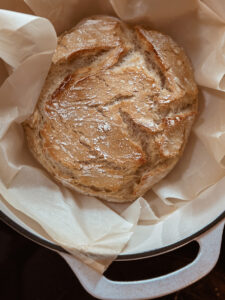













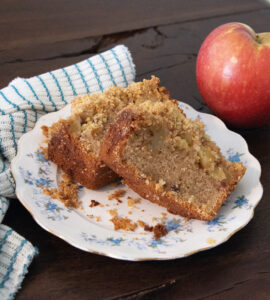








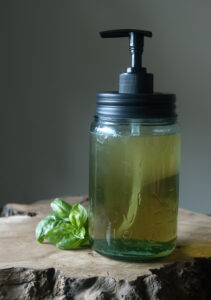



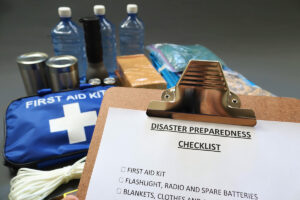

[…] 25 Ways to Use Flour Sack Towels Anywhere | Lehman’s […]